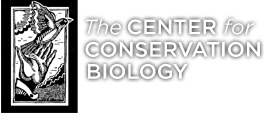Tracking Bird Movements with Transmitters
The new generation of wildlife tracking devices has opened up the possibility of addressing a broad range of questions that researchers could not have dreamed of answering just a decade ago. For many species of birds we are now able to examine their daily and annual lives in a way never before possible. CCB biologists have over 30 years of experience tracking birds with a variety of different techniques including traditional VHF, digital coded VHF, Argos satellite transmitters, GPS transmitters, GSM transmitters, and geolocators. Tracking birds is an art with many hours spent carefully planning attachment and trapping techniques to reduce impacts to birds.
Bald Eagle
In 2007 CCB initiated a wide-scale bald eagle tracking study, following the movements of eagles throughout the Chesapeake Bay and beyond. Eagles from three source populations were trapped and tagged with GPS or GSM transmitters. This work has identified important shoreline habitats, communal roost locations, and areas of high eagle mortality from electrical infrastructure. In the long term, information gained from these birds will help us to better understand eagle ecology and how to better manage the species within an increasingly human-dominated landscape. Learn more about the EagleTrak Project Read the EagleTrak Blog about the movements of the Norfolk Botanical Garden eagles. CCB consults with other wildlife and conservation agencies to plan and conduct eagle tracking projects around the world including Kentucky, New Jersey, Maine, Idaho, Norway, and Australia. Please contact Bryan Watts bdwatt@wm.edu if you would like technical assistance with an upcoming project.
Whimbrel and Hudsonian Godwit
CCB has successfully tracked over 25 shorebirds from their breeding grounds in the Arctic to their wintering grounds in the Caribbean and in South America. The tracking data has revealed previously unknown migratory routes which link breeding populations to migratory stopover sites throughout North America. These stopover sites provide critical staging areas for whimbrels and other migrating shorebirds to refuel before the next leg of their journey.
Peregrine Falcon
CCB began a research program called FalconTrak as a cooperative project designed to answer questions about the movements and survival of Peregrine Falcons (Falco peregrinus) within the mid-Atlantic region of North America. Sixty-one falcons were tracked between 2001 and 2012 with solar-powered, satellite transmitters to investigate the spatial dynamics of their annual cycle and to identify causes of mortality. Learn more about the FalconTrak Project
Golden Eagle
In 2008, The Center for Conservation Biology (CCB) initiated a long-term study of Golden Eagles in the mid-Atlantic region. In cooperation with the US Army at Aberdeen Proving Ground, 2 golden eagles were trapped on deer carcasses in March 2008 on the upper Chesapeake Bay. That same month, a third golden was trapped in Highland Co, VA. A 70g GPS-PTT satellite transmitter (Microwave Telemetry, Inc) was fitted to each bird with a backpack style harness. All three Golden Eagles winter in the mid-Atlantic region and summer in Eastern Canada and Maine. Migration routes and timing are being used to inform management and are combined with other golden eagle data through CCB’s participation in the Eastern Golden Eagle Working Group. Learn more about the Golden Eagle Tracking Project
Crowned Solitary Eagle
CCB and its partners are using GPS transmitters to investigate the habitat use, movement patterns, and causes of mortality in juvenile Crowned Eagles. The Crowned Eagle (Harpyhaliaetus coronatus) has been considered an endangered species by IUCN since 2004. The world population was estimated at less than 1000 individuals and their populations are declining. This is a large snake eagle that inhabits open woodlands in xerophytic forests of different biomes along its distribution that ranges from southern Brazil to northern Patagonia in Argentina. Human persecution is the most significant threat to the endangered Crowned Eagle in central Argentina. This is because of an incorrect local belief that the eagles prey on livestock. The tracking data is critical in understanding the interactions between local ranchers and eagles and the changing human perceptions on eagles and livestock. Learn more about the Crowned Eagle Tracking Project
Osprey
The Chesapeake Bay supports the largest Osprey breeding population in the world. The population experienced a dramatic reduction due to biocide-induced reproductive suppression in the post-World War II era and reached an estimated low of 1,450 pairs by the early 1970s. We now estimate the Bay population at 8,000-10,000 breeding pairs. Though the species is stable and increasing in North America, a number of anthropogenic threats continue to be of concern throughout its range including overfishing of prey by humans, hunting, and persecution at commercial fish farms. We tagged 3 adult males on their breeding territories in southeast Virginia in April 2013. Learn more about the OspreyTrak Project
